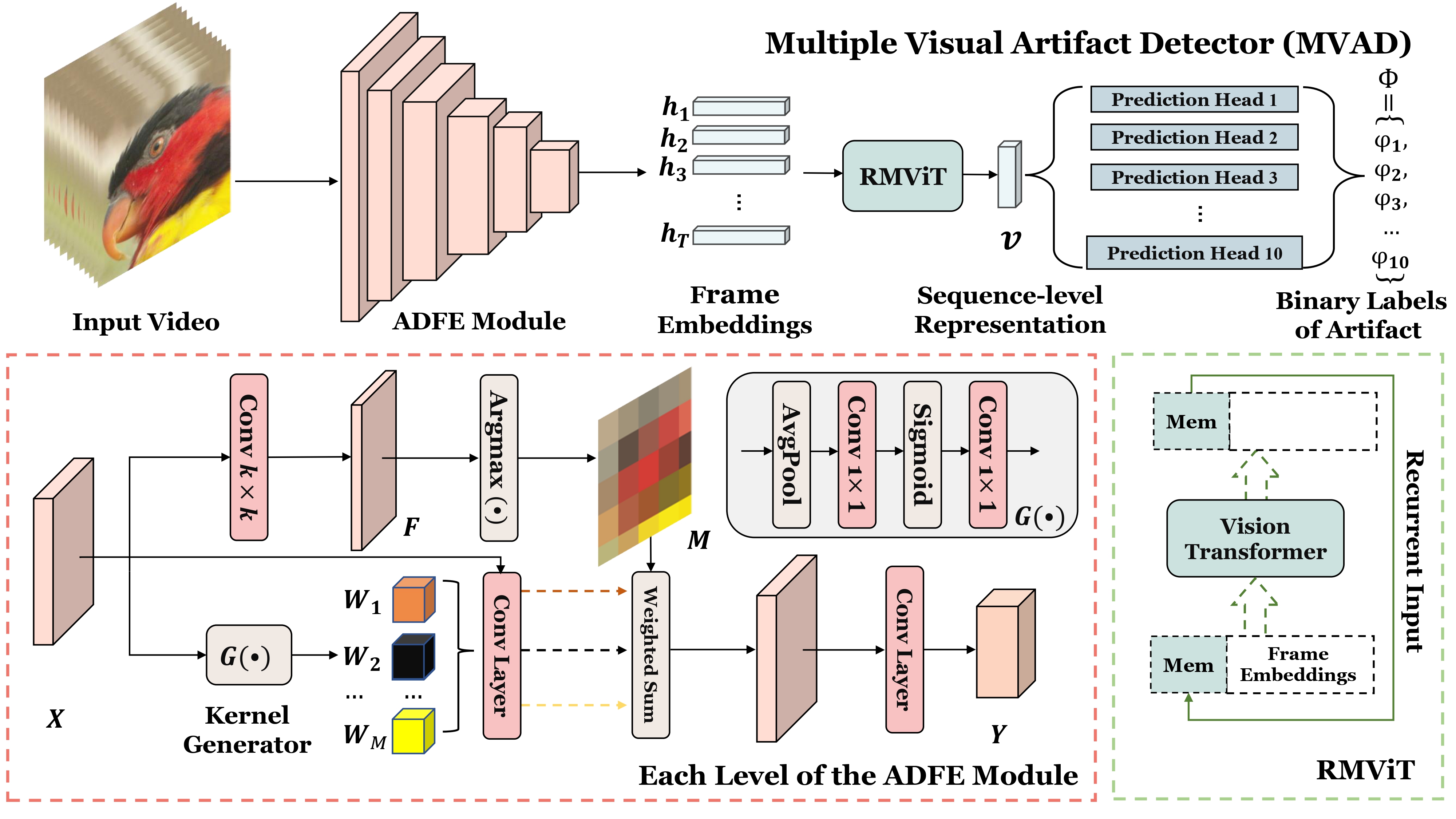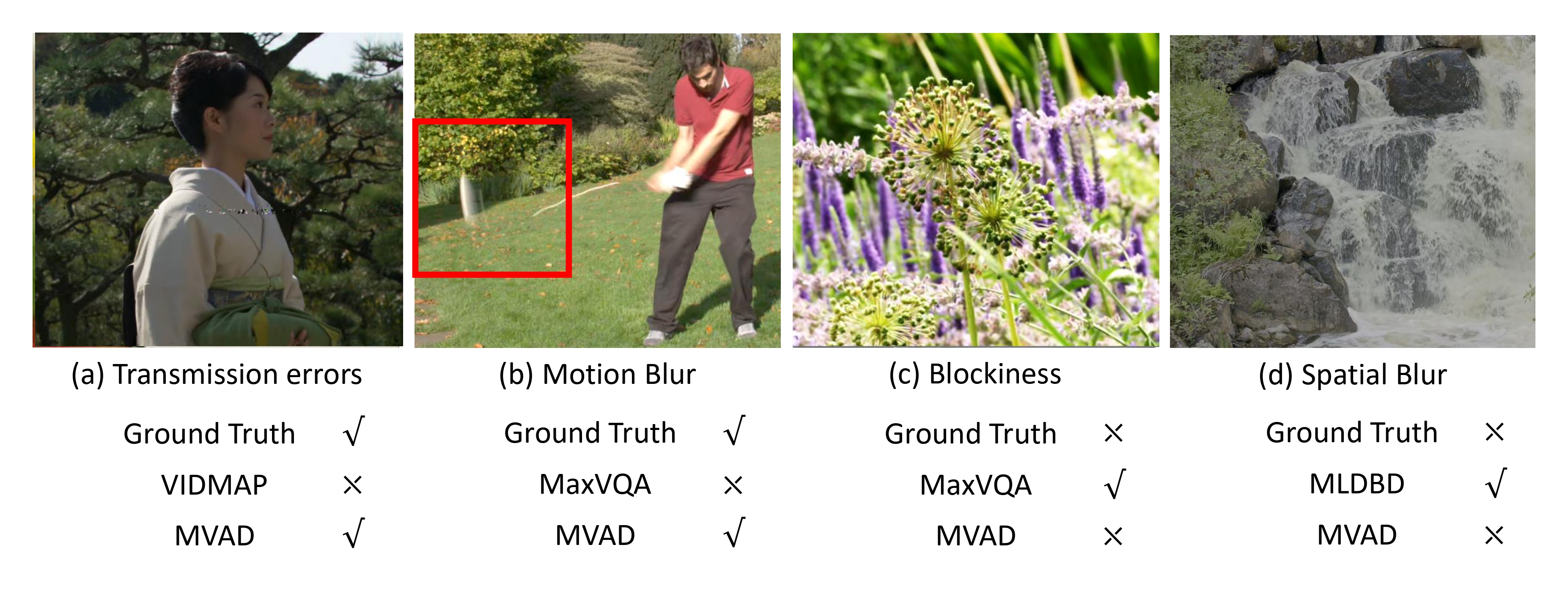MVAD: A Multiple Visual Artifact Detector for Video Streaming
University of Bristol
About
Visual artifacts are often introduced into streamed video content, due to prevailing conditions during content production and/or delivery. Since these can degrade the quality of the user's experience, it is important to automatically and accurately detect them in order to enable effective quality measurement and enhancement. Existing detection methods often focus on a single type of artifact and/or determine the presence of an artifact through thresholding objective quality indices. Such approaches have been reported to offer inconsistent prediction performance and are also impractical for real-world applications where multiple artifacts co-exist and interact. In this paper, we propose a Multiple Visual Artifact Detector, MVAD, for video streaming which, for the first time, is able to detect multiple artifacts using a single framework that is not reliant on video quality assessment models. Our approach employs a new Artifact-aware Dynamic Feature Extractor (ADFE) to obtain artifact-relevant spatial features within each frame for multiple artifact types. The extracted features are further processed by a Recurrent Memory Vision Transformer (RMViT) module, which captures both short-term and long-term temporal information within the input video. The proposed network architecture is optimized in an end-to-end manner based on a new, large and diverse training database that is generated by simulating the video streaming pipeline and based on Adversarial Data Augmentation. This model has been evaluated on two video artifact databases, Maxwell and BVI-Artifact, and achieves consistent and improved prediction results for ten target visual artifacts when compared to seven existing single and multiple artifact detectors.
Source code
Source code and the proposed training database have been released on GitHub.Model

Training Data Generation

Results
Performance of the proposed methods, other benchmark approaches and ablation study variants on two test databases and computational complexity.
Visual examples demonstrating the superiority of the proposed Artifact detector.


Citation
@misc{feng2024mvadmultiplevisualartifact,
title={MVAD: A Multiple Visual Artifact Detector for Video Streaming},
author={Chen Feng and Duolikun Danier and Fan Zhang and David Bull},
year={2024},
eprint={2406.00212},
archivePrefix={arXiv},
primaryClass={eess.IV},
url={https://arxiv.org/abs/2406.00212},
}
[paper]

